Dash cam memory cards (sometimes known as MicroSD cards) are tattooed with many numbers and letters, and the sheer quantity of cards available on the market can make one feel somewhat overwhelmed by this tsunami of little plastic chips. We’ve put together this guide to explain everything and help you choose the right memory card for your dash cam.
The maximum memory card size for dash cams varies between models. Therefore, the first thing you need to do is check the specifications of each memory card and look into what your dash cam can take before buying the one with the largest storage available.
Budget 1080p dash cams, often those under £100, have a maximum of 32GB or 64GB, while top-end dash cams or dash cams with higher video quality (1440p or 4K) can usually cater for larger sizes, often up to 256GB.
The best dash cam emory cards 2025
Whichever micro SD card you choose for your dash cam is up to you and it depends entirely on your setup, no matter whether it's an entry-level or high-tech dash cam. We've made the process slightly easier by listing examples of dashcam MicroSD memory cards of different storage levels and explaining some of the complex jargon and what to look out for.
The best dash cam memory cards 2025
The best MicroSD card
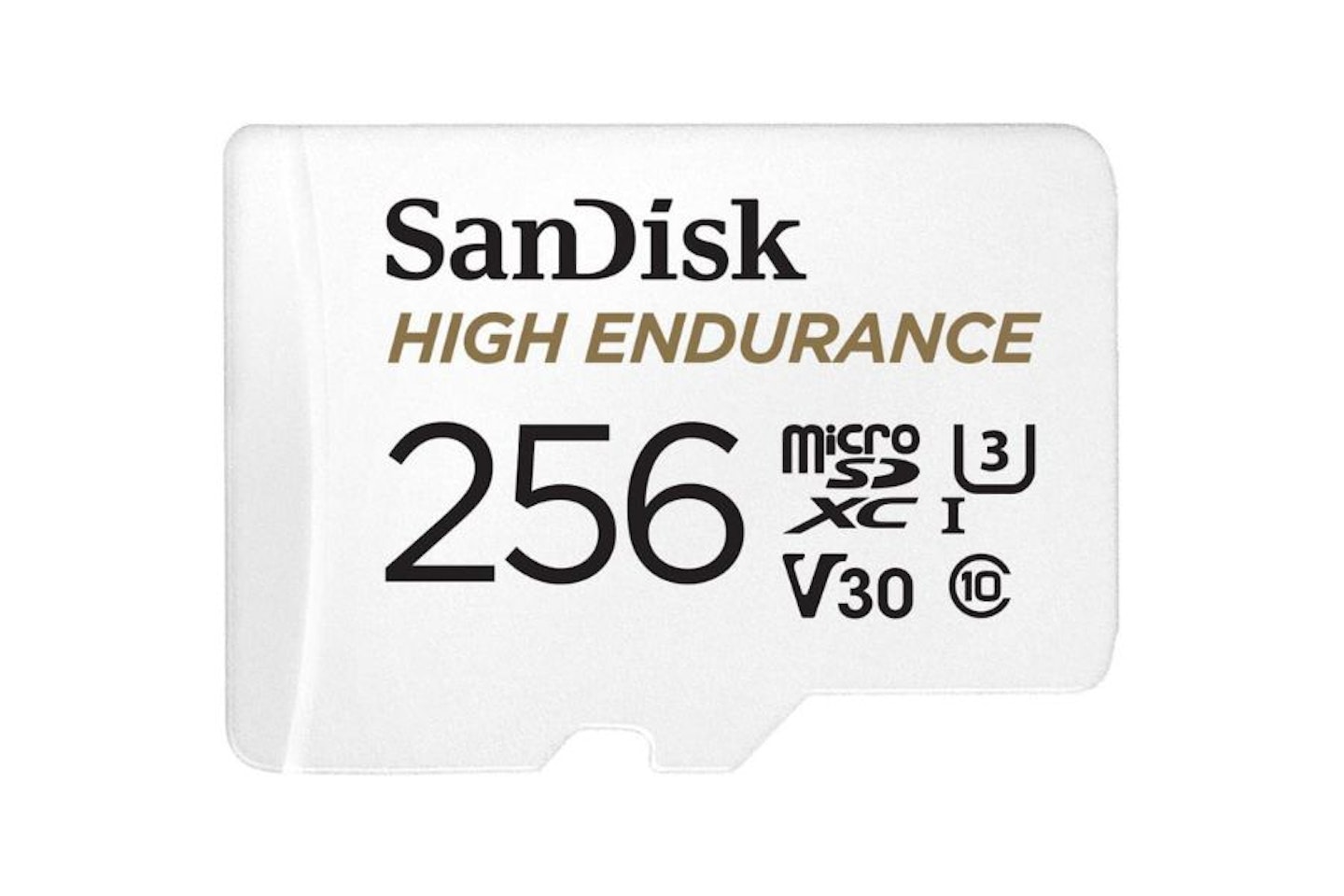 Via SanDisk
Via SanDiskDoubling the capacity of a 128GB unit, the SanDisk 256GB high endurance card can store a plethora of high-quality footage. It can store 4K videos of up to 100MB/S and can be used with anything from smartphones to dash cams.
According to SanDisk, you can record up to 20,000 hours of footage, which makes it incredibly useful for dash cams or security cameras.
Pros
- Better value for money than the Samsung 128GB unit for a whole 256GB of storage
- Can handle up to 20,000 hours of full HD recordings
- Adapted to suit 4K video recordings, making it very capable
Cons
- Might potentially be overkill for some dash cams
Editor's pick
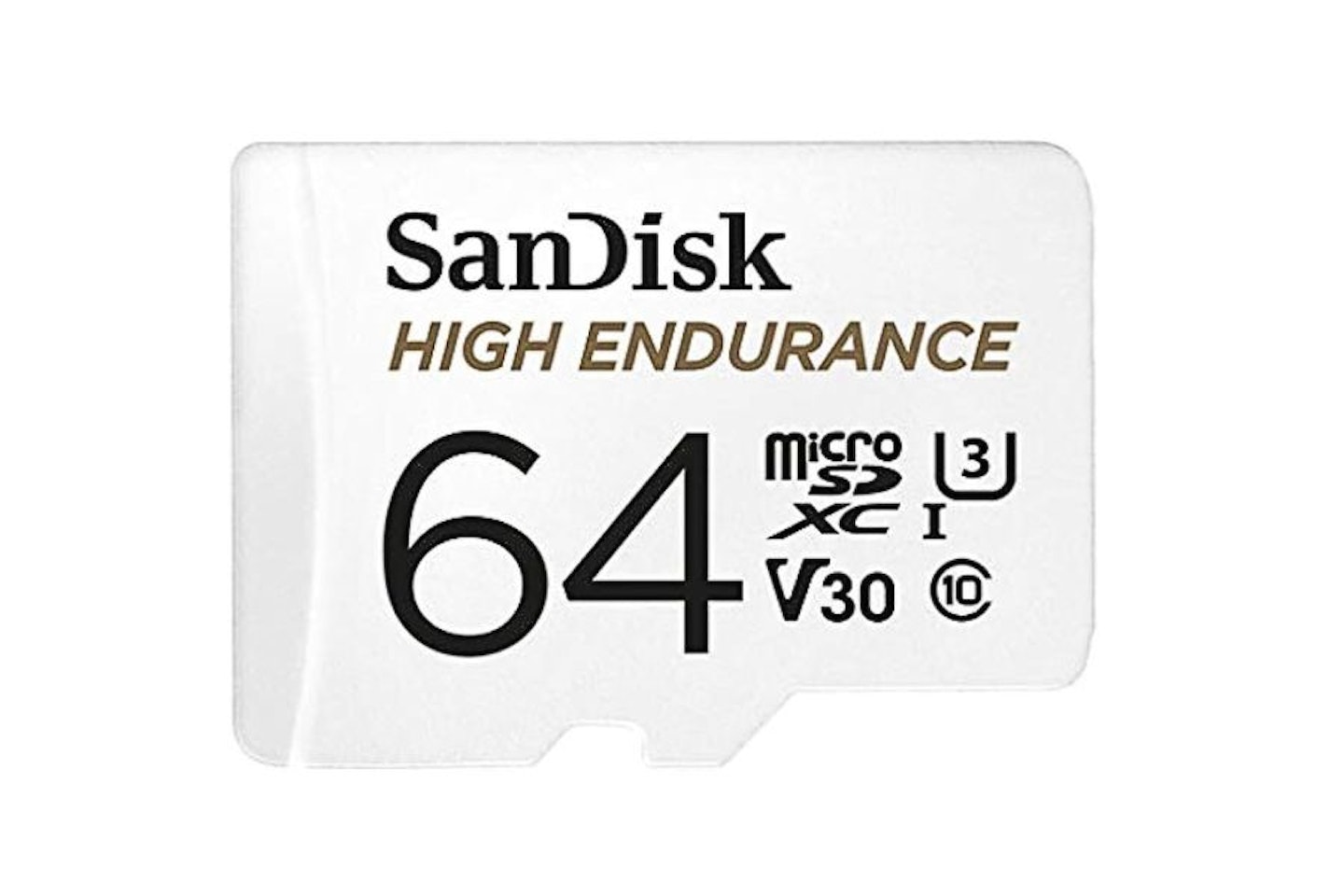 Via SanDisk
Via SanDiskSan Disk's High Endurance MicroSD cards are everything you need for use in a dash cam: reliable, fast, and great value. Our pick of the lot is the 64GB version, which is good for all circumstances except perhaps high-quality dual recording, in which case we suggest getting one of the larger ones. It even comes with an SD adaptor.
Pros
- 64GB is a worthy upgrade over a standard 32GB unit that may be included in a dash cam purchase
- Very good value for money at £16, making it only a few quid more than the Samsung 32GB unit
- Designed to cope with up to 20,000 hours of recording
Cons
- Not quite the best for high quality, dual dash cam recording
| Sizes available | 32GB, 64GB, 128GB, 256GB |
| Write speed | 40MB/s (U3, Class 10, V30) |
The best entry-level microSD card
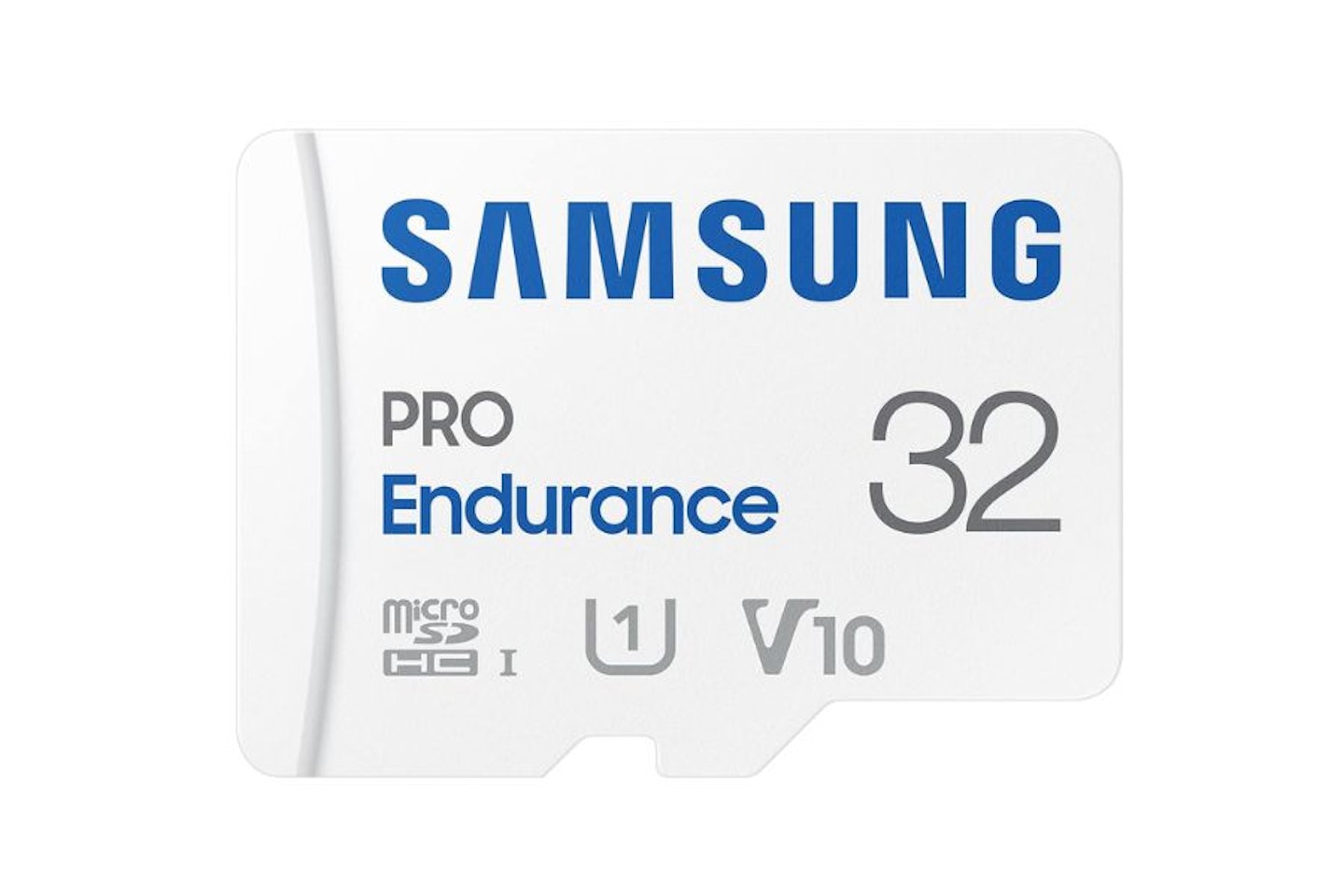 Via Samsung
Via Samsung32GB SD cards are often included in mid-range dash cam setups, making them the default choice for many people. Samsung's Pro Endurance SD card is a solid choice as it possesses 32GB of storage along with a speed class of 10MB/S.
It's suitable for anything from dash cams to a number of other applications including CCTV setups and outdoor security cameras.
Pros
- Ample performance of 10MB/S, which should suit most entry-level dash cams
- Ideal for CCTV and security camera setups as well as dash cams
- Very good value for money at just £12
Cons
- Storage is much weaker than many people might want
The best mid-range dash cam microSD card
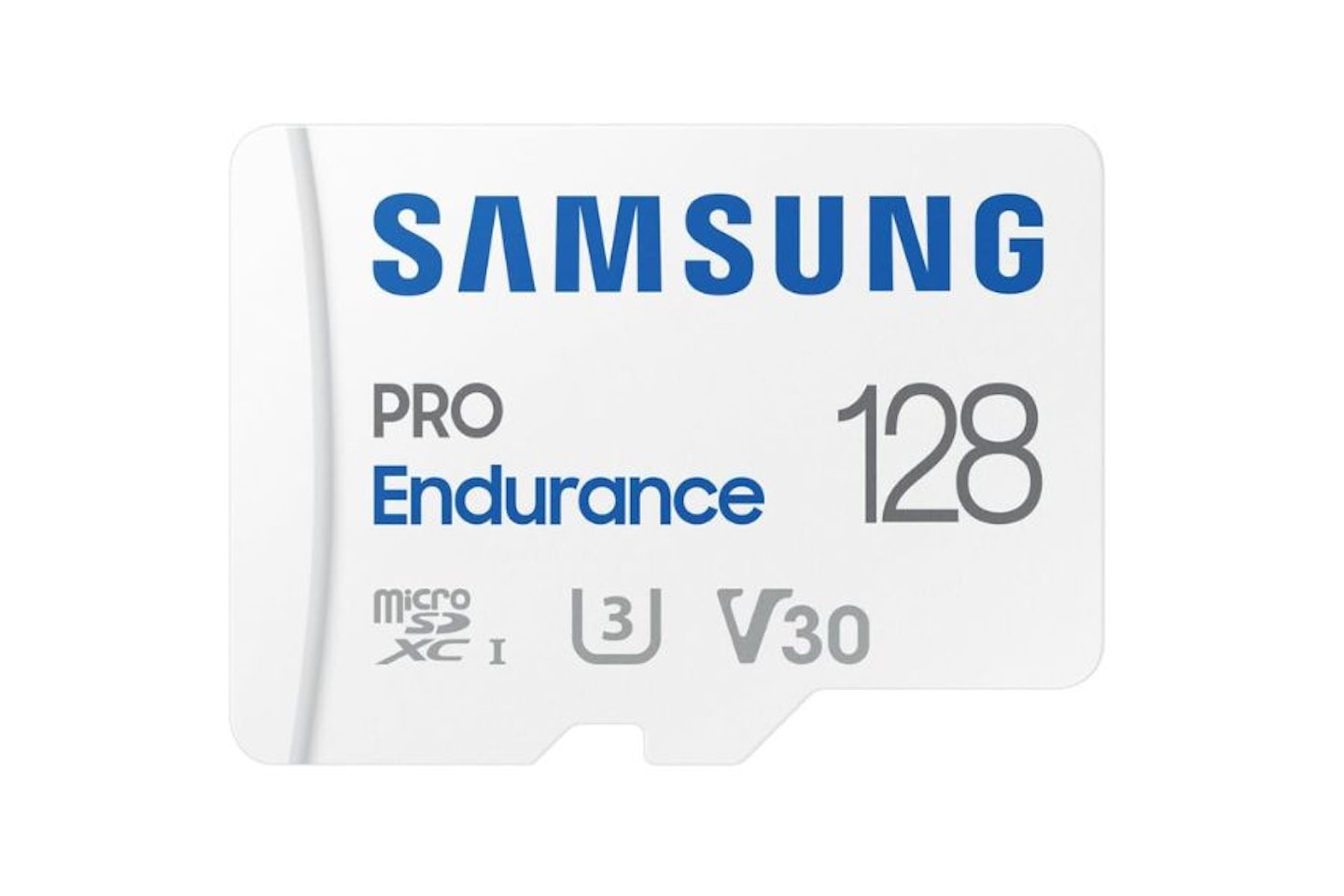 Via Samsung
Via SamsungSitting in the mid-range sector of the SD card marker, Samsung's Pro Endurance 128GB unit has a speed class of 30MB/S as well as, well, 128GB worth of storage - which is double that of an average smartphone.
Compatible devices include security cameras and dash cams. It even comes with a five-year warranty, which is reassuring for buyers.
Pros
- Can handle up to 30MB/S which is about as high as dash cams can get
- Five-year warranty included, which adds some reassurance to buyers
- Good quality and suitable for home security systems as well as dash cams
Cons
- Doesn't quite represent as good value as the smaller GB units
The best SD card for very large storage
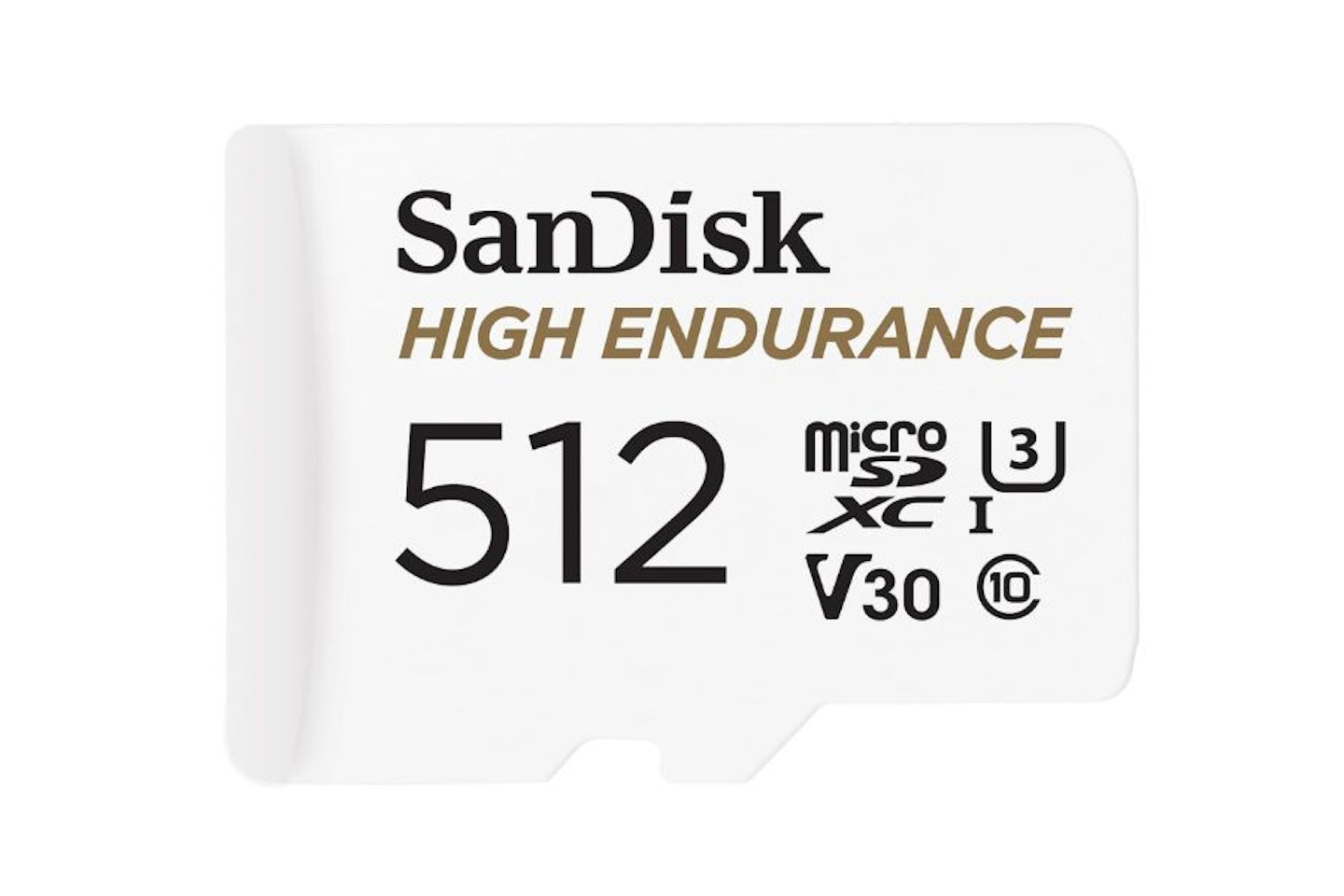 Via SanDisk
Via SanDiskSitting at the top league of the SD card world is this pricier 512GB SD card, it has a speed class of 30MB/S, placing it at the most capable of SD cards out there. It can also record up to 40,000 hours of footage, which makes it excellent for CCTV systems as well as dash cams for longer journeys.
This makes it immensely useful if you're doing a lot of miles or have a comprehensive home security system. It may cost the best part of £70, but it's a substantial storage upgrade over what might be included in your standard purchase of a dash cam setup.
Pros
- Highly capable, being able to cope with 100MB/S and suits high-quality recordings up to 4K
- Can cope with up to 40,000 hours of recording, making it perfect for dash cams and home security systems
- The ultimate benchmark in dash cam footage storage
Cons
- At £70, it's a huge jump in cash over the others for 512GB of storage
The best Nextbase SD card
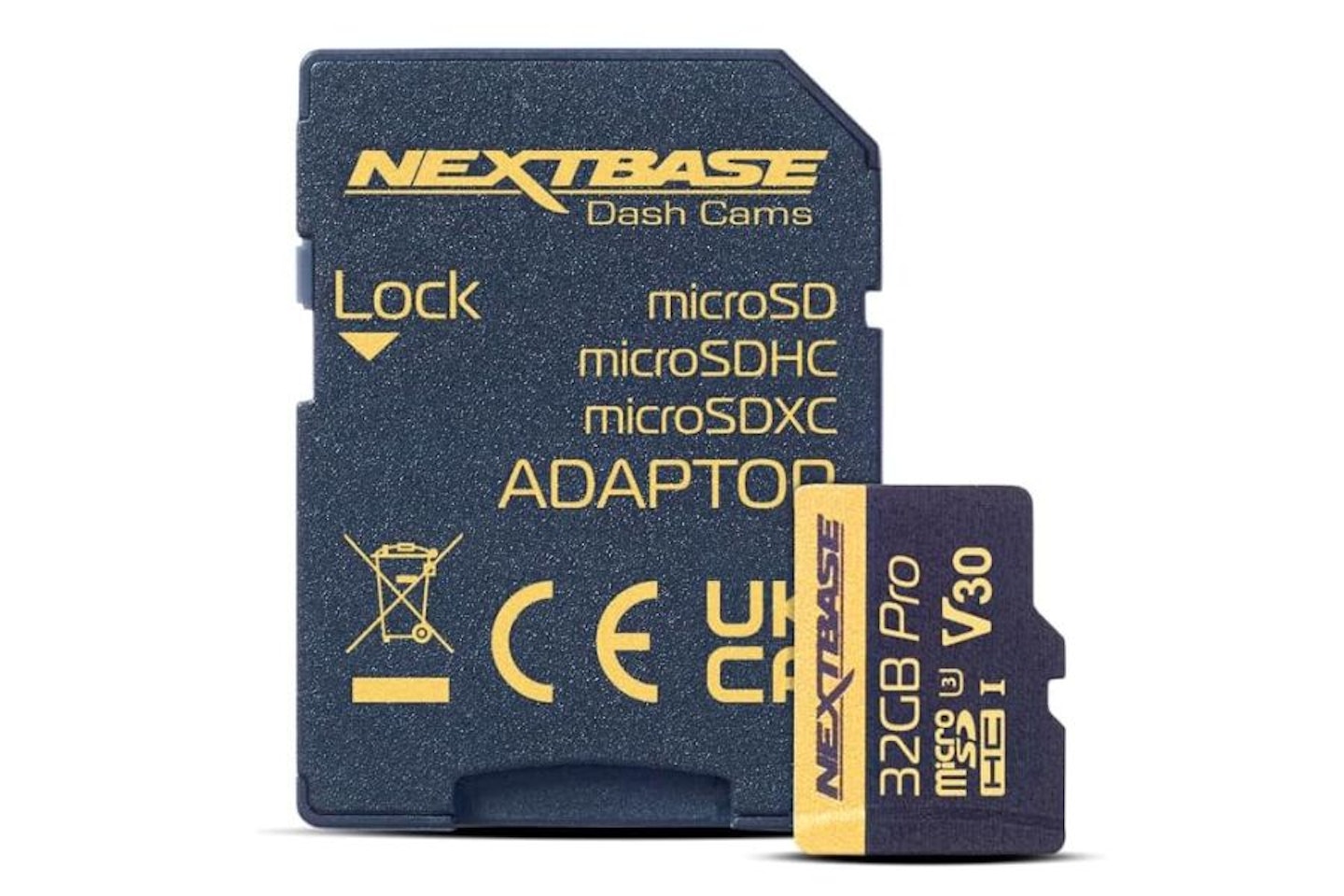 Via Nextbase
Via NextbaseAs a dash cam manufacturer, Nextbase also produces SD cards from 32GB to 256 GB. It recommends formatting the cards every two to three weeks to help maintain them and that they are compatible with many of its models.
These include the 122 and 222XR models all the way up to the flagship 622GW and pretty much everything else in between. Nextbase has even written a handy guide on what their SD cards can cope with in terms of recording resolution on your dash cams and how many minutes they can take.
Pros
- Designed specifically for dash cams, making them reliable and capable
- Even the 32GB unit can take up to 60 mins of high quality dual dash cam recording before overwriting itself (4K front, 1080p rear)
- Perfect if you own a Nextbase dash cam setup
Cons
- They're only really compatible for Nextbase dash cams as opposed to all brands and models
FAQs and things to remember with dash cam memory cards
How important is longevity with an SD card?
It’s important to understand that the constant overwriting of footage is hard on MicroSD cards, and they, therefore, have a limited lifespan when used in dash cams. Makers and retailers of microSD cards, therefore, void MicroSD card warranties if they’re used in dash cams. That’s also why it’s important to check the MicroSD card every couple of weeks.
U3 MicroSD cards are intended for dash cam (and security camera) use, including mirror dash cams, so you can opt for one of these if you wish. Some MicroSD cards such as Samsung’s Evo Plus and San Disk’s High Endurance MicroSD cards will offer better durability than others. It also pays to stick with reputable brands such as Samsung, San Disk, and Kingston. Nextbase also offer SD cards of its own, which are adapted for dashcam use.
Does speed matter with SD cards?
This is not something you need to worry about, because most, if not all, MicroSD cards are fast enough to cope with dash cam footage - even at 4K.
On a MicroSD card, you’ll see a ‘U’ with either a 1 or 3 inside it, a ‘C’ probably with a 10 inside it, and perhaps a ‘V’ with a value next to it. The ‘U’ stands for Ultra High Speed, the ‘C’ stands for Class, and the ‘V’ stands for Video Speed Class. They all refer to the writing speed (read speed isn’t that important with MicroSD cards for dash cam use because the footage is written onto the memory card, not read off it). It's measured in MB/S (Megabytes per second).
As long as your MicroSD card is Class 10, U1, U3, V10, or V30, that’s enough. For 4K dash cam setups, you will want to go for U3/V30 cards, which will likely have larger amounts of storage.
What are the different types of SD cards?
You’ll come across different types from the likes of ‘SDHC’ to ‘SDXC’ MicroSD cards. The former stands for Secure Digital High Capacity, the latter for Secure Digital Extended Capacity. SDHC cards have up to 32GB of storage, SDXC units have anything upwards of that.
How much footage can different memory cards take via a dash cam?
How much footage a MicroSD card can store of course depends on its own size but also the quality of the footage. We've provided some figures below to give you a ballpark figure.
Hours per card size:
32GB = 4-5 hours of 1080p; 3-hours of 1440p, 1 hour of 4K
64GB = 8-10 hours of 1080p; 6 hours of 1440p, 1 hour of 4K
128GB = 20 hours of 1080p; 12 hours of 1440p; 4-5 hours of 4K
256GB = 40+ hours of 1080p; 25 hours of 1440p; 9-10 hours of 4K
There are variables added in on top of these which will affect overall storage. These include frame rate and whether you’re using a dual dash cam will affect how much footage MicroSD cards can store.
Top things to remember
It's mightily important to find out the largest size MicroSD card your dash cam can accommodate. Different dash cams will have different compatibilities for SD card sizes, so you must purchase accordingly rather than jump straight to the largest amount of GB available.
Next, try and do a rough calculation to establish what size MicroSD card you realistically need. A standard SD card for standard video recording won't behave in the same way as a high endurance unit designed for dash cams. Remember to look for high endurance labels and check that the SD cards you're looking at are suitable for dash cams.
Make sure the MicroSD card you choose is fast enough (U1, U3, Class 10, V10, or V30; or U3/V30 for 4K). A lot of dash cams can record in super-high resolutions from 2 to 4K, so it's important to allow for the speed and frame rate of the dash cam in question. You needn't worry so much for a more basic, 1080p setup.
Lastly, most dash cams do come with SD cards already. However, to keep costs down, budget dash cams will be 32GB units most of the time - or possibly even 16GB. If you're looking for an upgrade in the SD card department, it might be a good idea to keep an eye on the specifications of the one included and browse accordingly. All you may want is a unit that can offer the same level of performance in line with your dash cam while providing more storage.
Aaron Hussain is a commercial content writer at Bauer Media writing for Parkers and CAR. He is obsessed with classic cars and anything with a fascinating story to tell.
